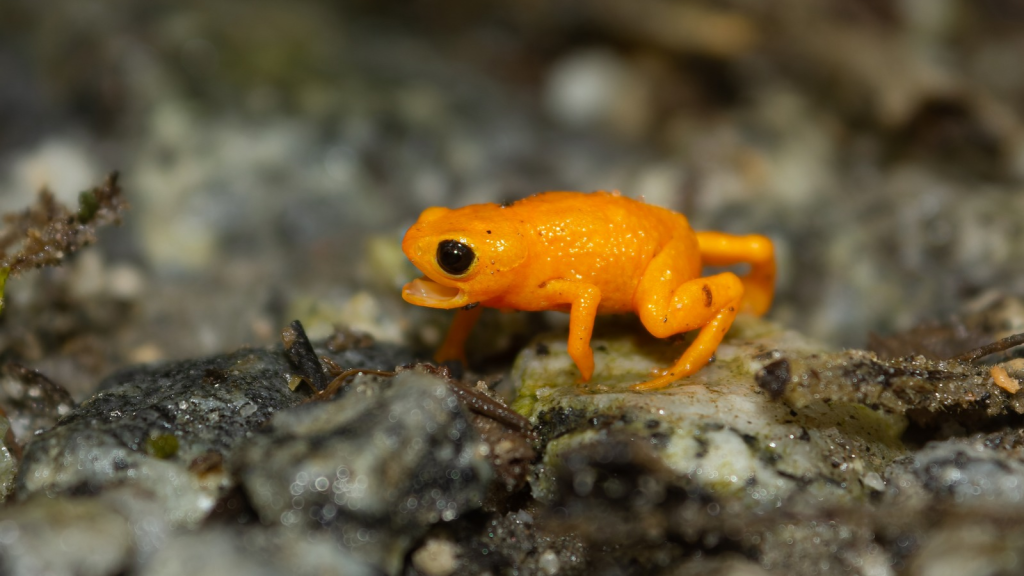Deep in the Atlantic rainforests of Brazil lives a tiny frog with a big personality. The pumpkin toadlet, no larger than a thumbnail, is a fascinating creature that’s been turning heads in the scientific community. With its vibrant orange skin and unique characteristics, this little amphibian is astonishing. From its peculiar skeleton to its unusual mating habits, the pumpkin toadlet is a true marvel of nature. Let’s take a look at some of the most intriguing facts about this diminutive denizen of the forest floor.
They’re Terrible Jumpers
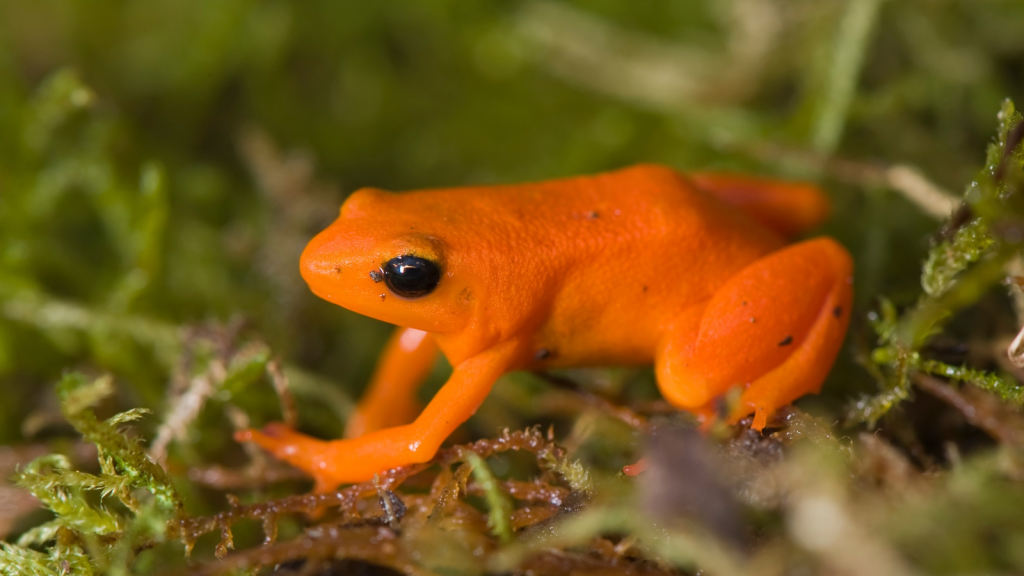
Despite being frogs, pumpkin toadlets are surprisingly poor jumpers. When they try to leap, they often end up tumbling through the air in a graceless fashion. This clumsy behaviour is due to their tiny size and unique inner ear structure, which affects their balance and spatial orientation. Interestingly, their poor jumping ability doesn’t seem to hinder their survival, as they’ve adapted to life on the forest floor where agile leaps aren’t necessary.
They Glow in the Dark
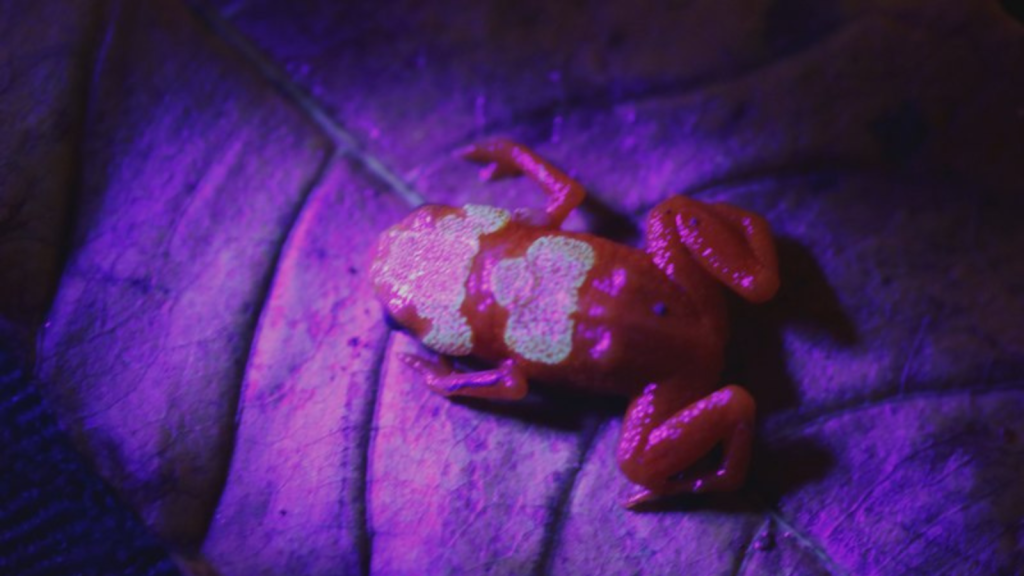
Under UV light, pumpkin toadlets exhibit an eerie blue glow. This fluorescence comes from special pigments in their skin and bones. Scientists believe this trait might help them communicate with each other in the dim light of the forest floor. The glow is particularly strong in their head and limbs, creating a striking pattern that’s visible even through their skin.
They’re Deaf to Their Own Calls
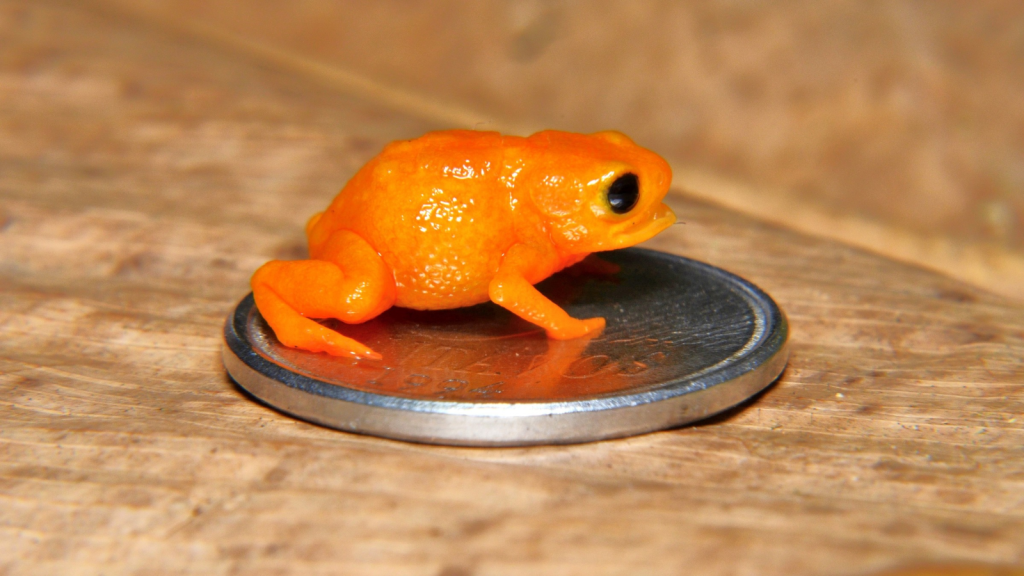
Pumpkin toadlets lack a middle ear, which means they can’t hear their own mating calls. Instead, they rely on visual cues and vibrations to communicate. Males will puff up their throats and wave their arms to attract females during mating season. Despite being unable to hear, they still produce soft peeping sounds, which may serve as a visual display when their throats expand.
They’re Toxic
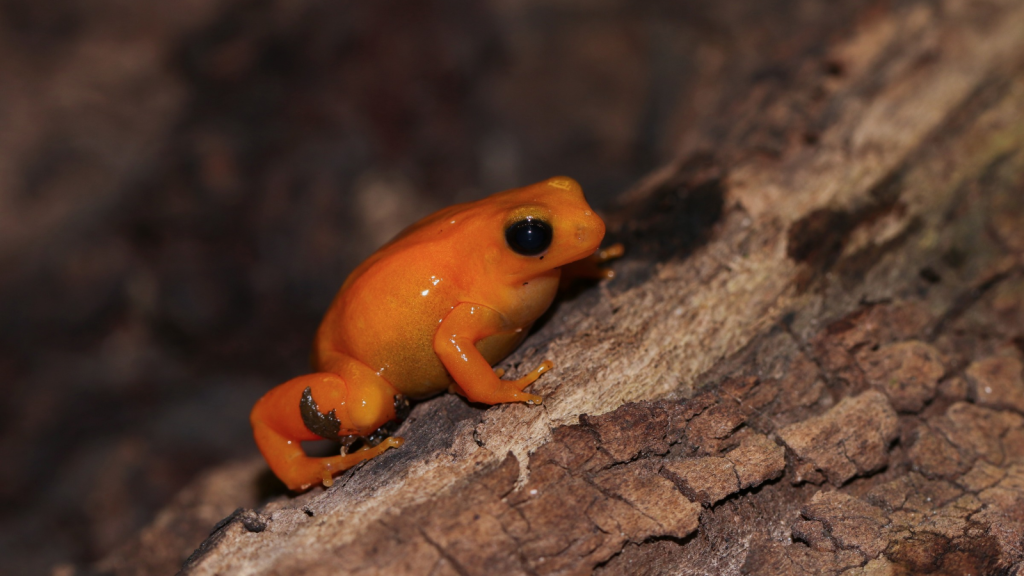
Don’t let their cute appearance fool you – pumpkin toadlets are poisonous. Their bright orange colour serves as a warning to predators. The toxins in their skin can cause pain and discomfort if ingested, helping to keep these tiny frogs safe from harm. These toxins are similar to those found in poison dart frogs, although generally less potent.
They’re Incredibly Small
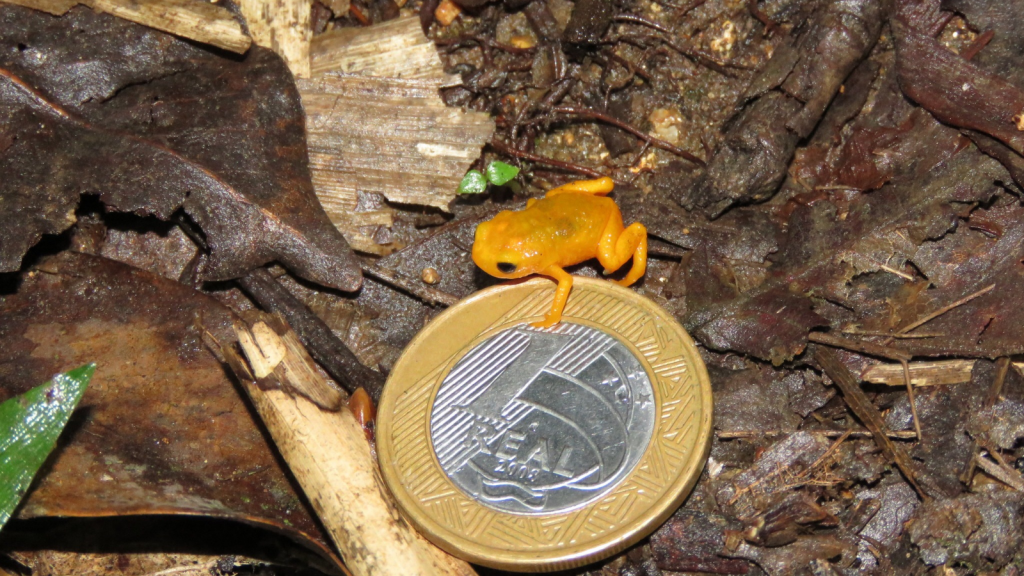
Pumpkin toadlets are among the smallest frogs in the world. Most adults measure between 8 to 10 millimetres in length – about the size of a small pebble. Their tiny size allows them to hide easily among the leaf litter of the forest floor. In fact, they’re so small that they’re often mistaken for insects by casual observers.
They Have Fluorescent Skeletons
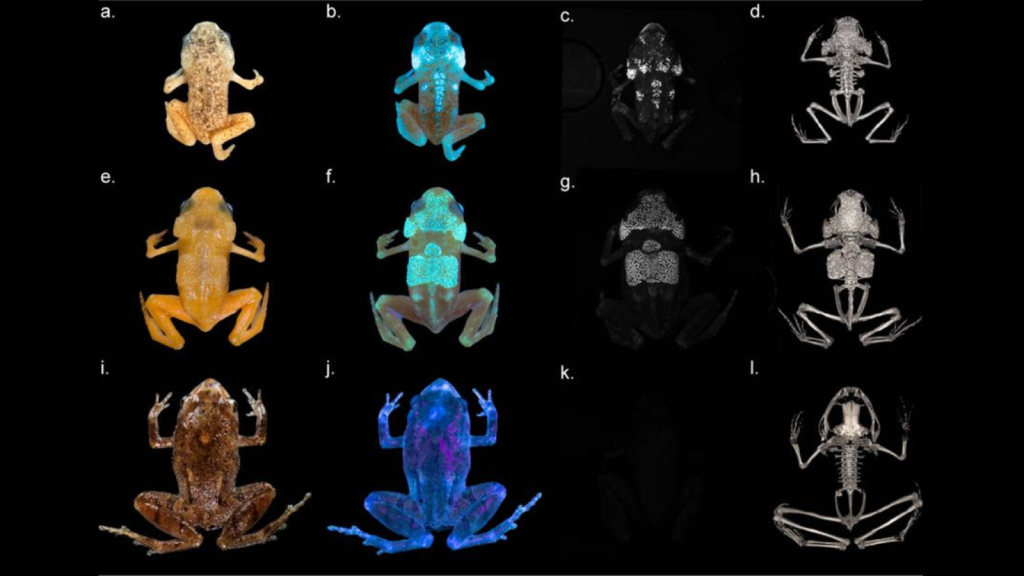
Not only does their skin glow under UV light, but their bones do too. This skeletal fluorescence is visible through their thin skin, giving them an otherworldly appearance. Scientists are still studying why these frogs have evolved this unique trait. The fluorescent compounds are embedded in their bones, making their entire skeleton visible under the right light conditions.
They’re Named After a Vegetable

The pumpkin toadlet got its name from its bright orange colour, which resembles a miniature pumpkin. Their scientific name, Brachycephalus ephippium, is less catchy but refers to their short heads and the saddle-like pattern on their backs. The genus name Brachycephalus literally means “short head” in Greek, accurately describing their squat appearance.
They Have Reduced Toes
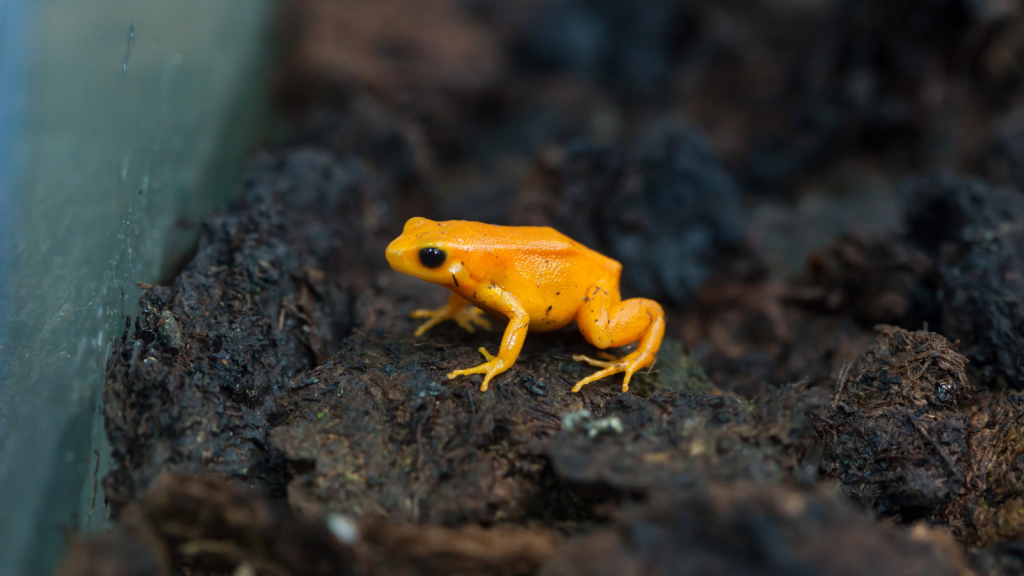
Unlike many frogs, pumpkin toadlets have fewer toes on their feet. Their front feet have only three toes, while their back feet have four. This reduction in digits is thought to be an adaptation to their terrestrial lifestyle in the leaf litter. The reduced number of toes doesn’t seem to affect their ability to grip surfaces or move through their environment.
They’re Diurnal

Unlike many frogs that are active at night, pumpkin toadlets are diurnal, meaning they’re active during the day. You can spot them hopping around the forest floor in broad daylight, searching for tiny insects to eat. Their daytime activity might be related to their bright colouration, which serves as a warning to predators in the light of day.
They Have a Limited Range
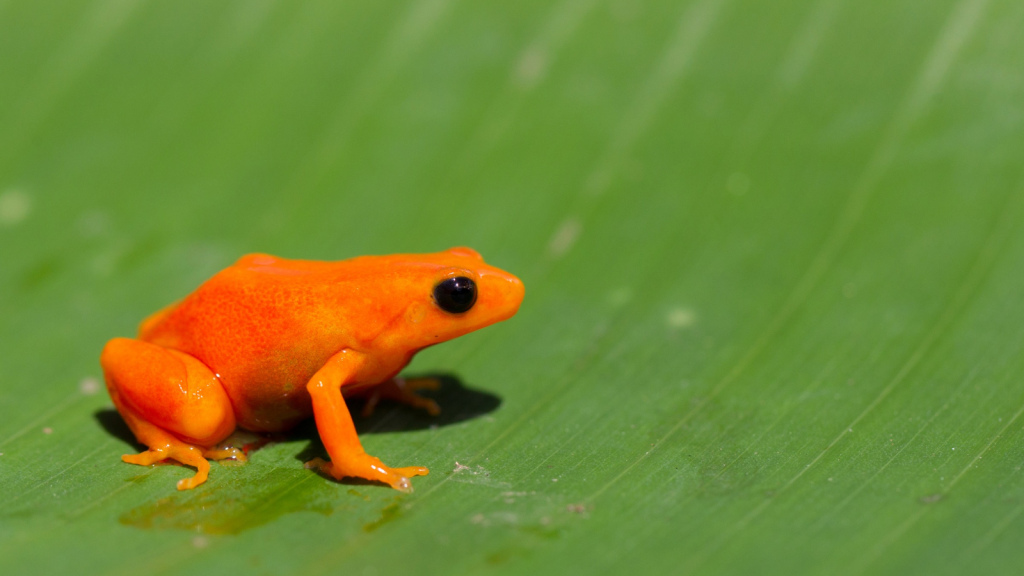
Pumpkin toadlets are found only in a small area of southeastern Brazil’s Atlantic Forest. This limited range makes them vulnerable to habitat loss and other environmental threats. Conservation efforts are crucial to ensure their survival. Their specific habitat requirements, including high humidity and a dense leaf litter layer, make them particularly sensitive to environmental changes.
They’re Part of a Diverse Family
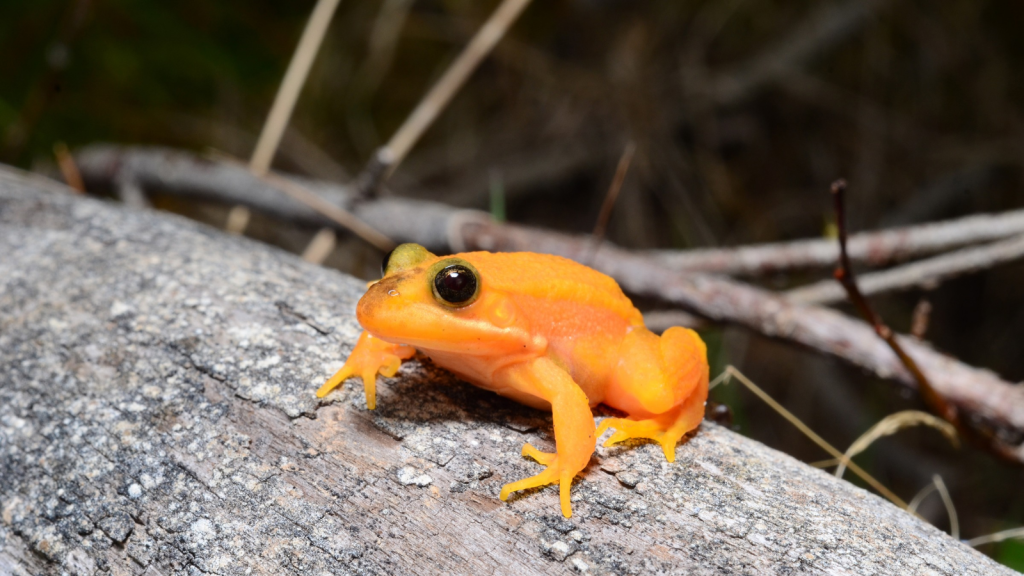
The pumpkin toadlet belongs to a genus called Brachycephalus, which includes several species of tiny, brightly coloured frogs. Each species in this group has its own unique colouration and patterns, ranging from bright yellow to deep red. New species of Brachycephalus are still being discovered, with over 30 species currently recognized by scientists.
They Have a Unique Mating Ritual
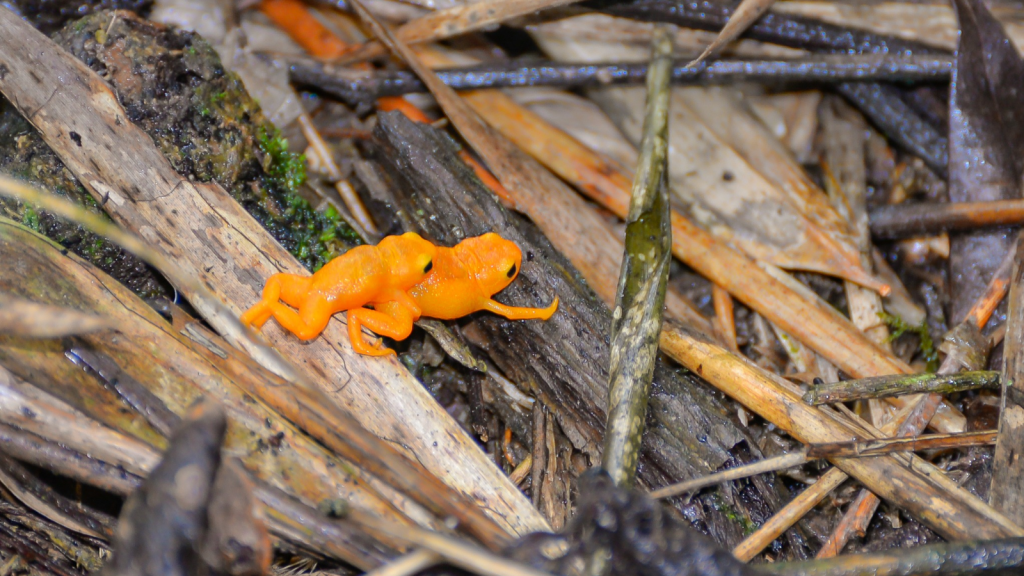
During mating season, male pumpkin toadlets engage in a curious behaviour called ‘toe trembling’. They rapidly vibrate their toes against leaves, creating vibrations that attract females. This adaptation compensates for their inability to hear their own vocal calls. The vibrations produced by toe trembling can travel through the leaf litter, allowing females to locate potential mates even in dense vegetation.
They’re Losing Their Vestibular System
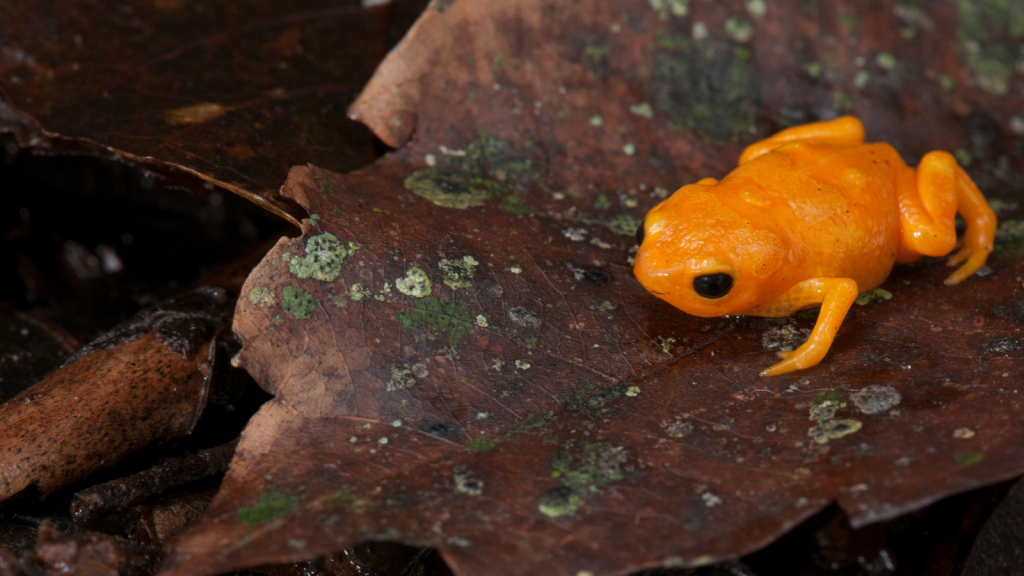
Recent studies have shown that pumpkin toadlets are gradually losing parts of their vestibular system – the sensory system that helps with balance. This explains their clumsy jumping and may be a result of their miniaturisation over evolutionary time. Remarkably, this loss doesn’t seem to negatively impact their survival, suggesting they’ve found other ways to navigate their environment.
They Have Transparent Skin

The skin of pumpkin toadlets is so thin that you can actually see some of their internal organs. This transparency, combined with their fluorescent bones, gives them a unique appearance under certain light conditions. Their transparent skin might also play a role in thermoregulation, allowing them to absorb heat more efficiently in their cool forest environment.
They’re Helping Scientists Understand Evolution
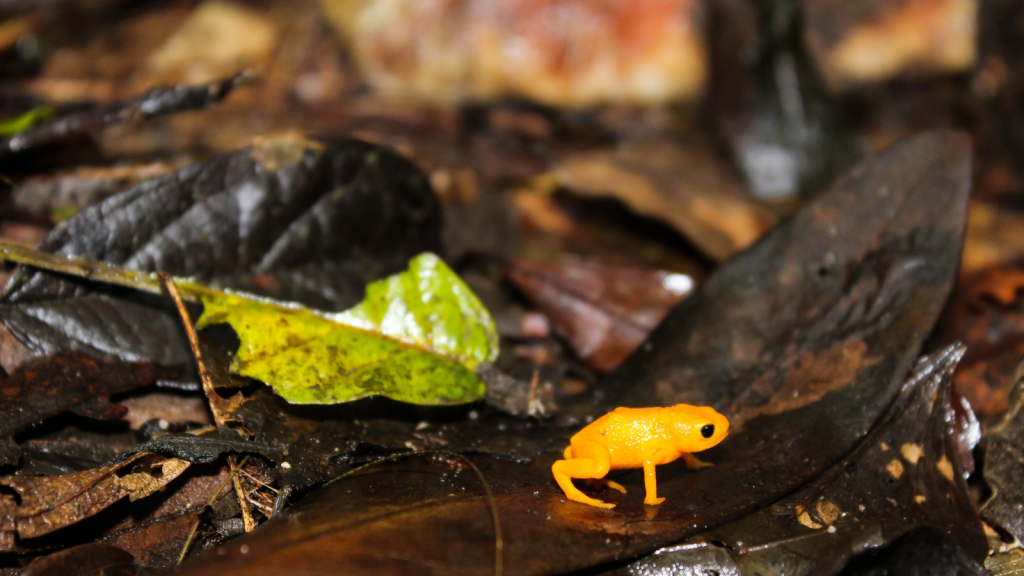
The unique characteristics of pumpkin toadlets are providing valuable insights into evolutionary processes. By studying these tiny frogs, scientists are learning more about how animals adapt to specific environments and how miniaturisation affects body structure and function. Their study has implications for understanding not just frog evolution, but also broader questions about how body size impacts animal physiology and behaviour.

